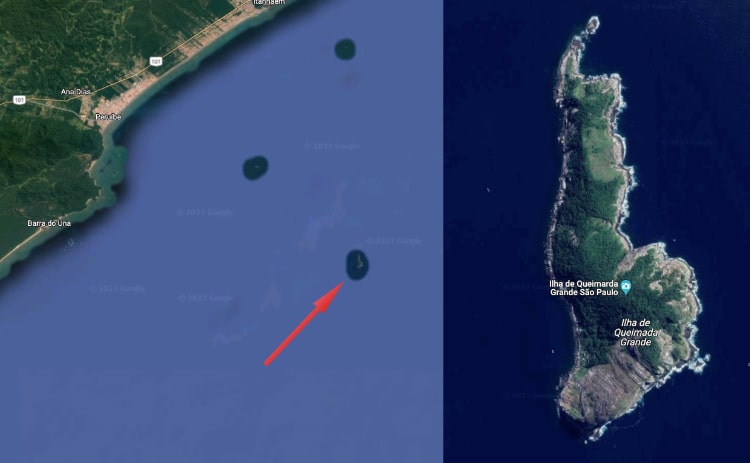What Makes Snake Island the Most Frightening Place on Earth?
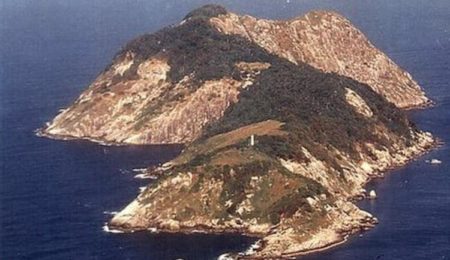
Delirious, off-limits, and full of venomous pit vipers, the island nicknamed “Snake Island” is breathtakingly apt. Unlike other picturesque islands that attract mass tourists from around the globe, this island is untouched by human developers for a decently fair reason. It is the only home of one of the world’s deadliest and most endangered snakes, the golden lancehead. Read on to learn more about snake charm and glory!
Table of Contents
Where Is Snake Island?
Located around 93 kilometers from downtown Sao Paulo, off the shore of Brazil, is the island named Ilha da Queimada Grande, also infamously nicknamed “Snake Island.†The island is 206 meters in elevation from the sea level, i.e., ranging approximately 676 feet above the ocean. It is very small in size, about 43 hectares, i.e., 106 acres, and has a moderate climate. The climate here is no different than that of its neighboring island, Nimer. The island has a variety of vegetation, and its terrain varies considerably.
According to the researchers, 62 acres of the island is covered by rainforest, and the remaining areas consist of only barren rocks and open grassland, all thanks to the callous human acts of deforestation, which is now distinctly evident in every nook and corner of the world! In fact, deforestation stands for the origin of the island’s name. The term “queimada” is a Portuguese word for “forest fire.†A couple of decades ago, locals attempted to clear the rainforest with fire to accommodate a banana plantation on the island. Governed as a unit of the municipality of Itanhaem, in the state of Sao Paulo, the region has between one to five snakes per square meter.
How Dangerous Are the Snakes on Snake Island?
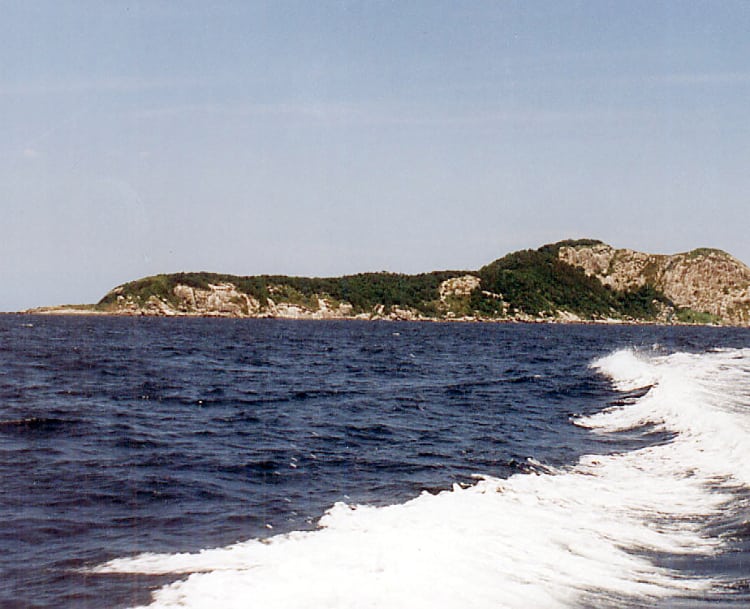
According to Marcelo Duarte, a curious biologist who had the guts and audacity to visit Snake Island more than 20 times, the claim of between one to five snakes per square meter is a bit of exaggeration in the belief of locals – though perhaps not by much! It’s more like one snake per square meter, surely not a number that should ease one’s peace of mind. Just to estimate, you’re never more than three feet away from death at one snake per meter.
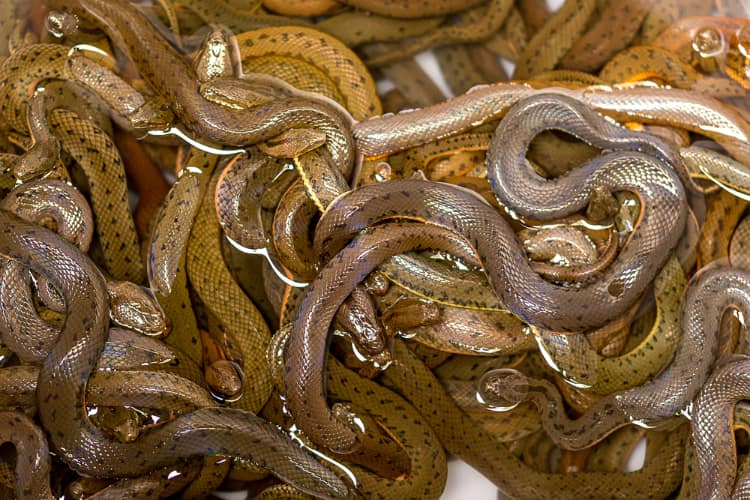
However, “between one and five snakes per square meter†might not sound so deadly if the snakes were a mere two inches long and non-venomous. The snakes of Queimada Grande, however, are golden lanceheads, a gory and unique species of pit viper. The critically endangered, venomous Bothrops insularis. Lanceheads have a diet of birds and live on the migratory birds that use the island as a resting point. Because there are a large number of snakes on the island, there is a constant battle for resources. Queimada Grande records a population of a total of 41 bird species. However, the golden lancehead relies on only two: the southern house wren (Troglodytes musculus) and a popular species of flycatcher, Chilean elaenia, which feeds on vegetation in the same area as the snake.
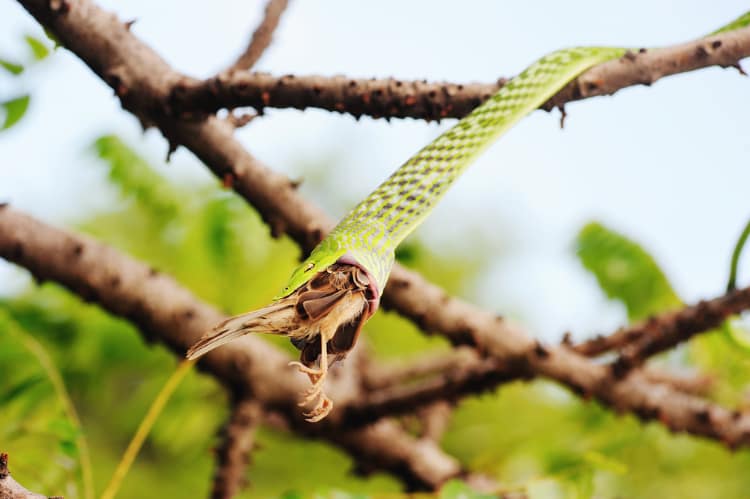
In an island ecology occupied by hundreds of rival species, the perilous venom of the golden lancehead optimizes its ability to feed, survive, and thrive. The need for the snakes to quickly incapacitate and slay seabirds before they fly away led to the evolution of this species’ deadly venom. The half-a-meter-long golden lanceheads living on Snake Island possess a potent and lethal venom that quickly melts the flesh around their fangs. This genus of snake is a strong cause of many Brazilian snakebite-related fatalities.
How Many Golden Lanceheads Live on Snake Island?
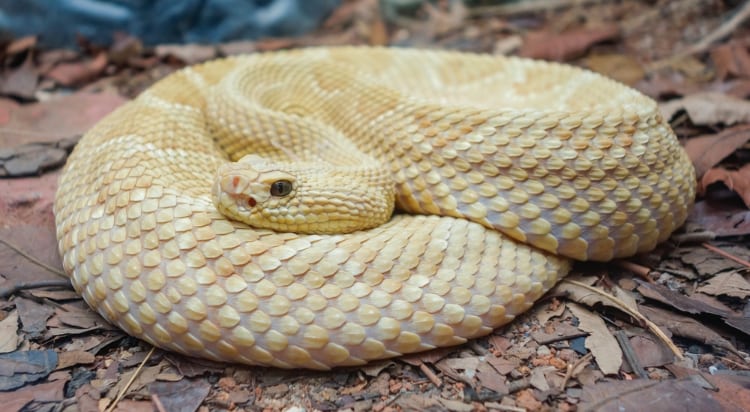
The population of the island was about 4,30,000 snakes earlier, but recent estimates tend to be much lower. According to a herpetologist’s estimate from a Discovery Channel show in 2015, there were between 2,000 and 4,000 golden lanceheads in existence there. The population of the golden lancehead distinctly displays the risk to the species from inbreeding.
The IUCN Red List of Threatened Species asserts that the golden lancehead snake is severely endangered due to its overall low population. It is also placed on the list of threatened species in Brazil. The island does, however, have a tiny population of Dipsas albifrons, a non-venomous snake species.
These Grisly Tales Will Make You Spooky!
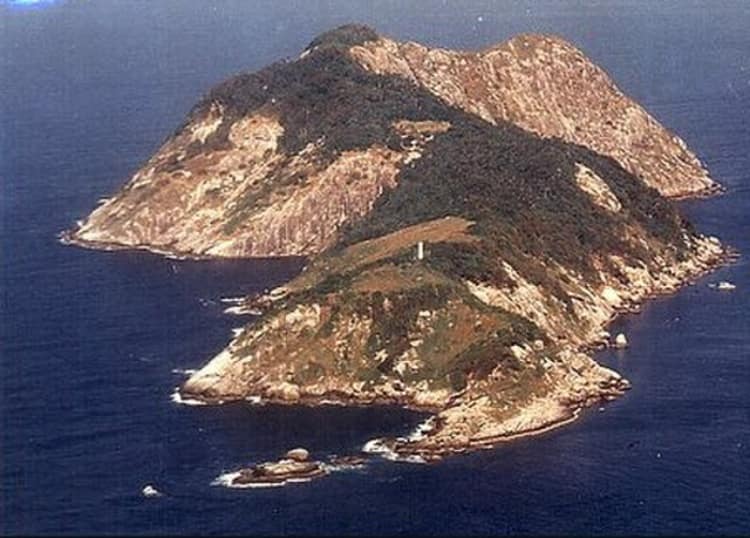
People in the coastal communities close to Queimada Grande like telling two tales of deaths that occurred on Snake Island. One involves a fisherman who unknowingly visits the island to pluck bananas. Of course, he gets bit. He succeeds in getting back to his boat, where the venom of the snake quickly takes its toll on him. Later, he is discovered on the boat deck in a huge pool of blood.
The final lighthouse keeper and his family are the subjects of the other tale. A group of snakes broke in via a window one evening and attacked the man, his wife, and their three kids. They run towards their boat in a last-ditch effort to escape and get away, but as they do so, they are attacked by snakes in the trees above.
Read This: Know Before You Go.
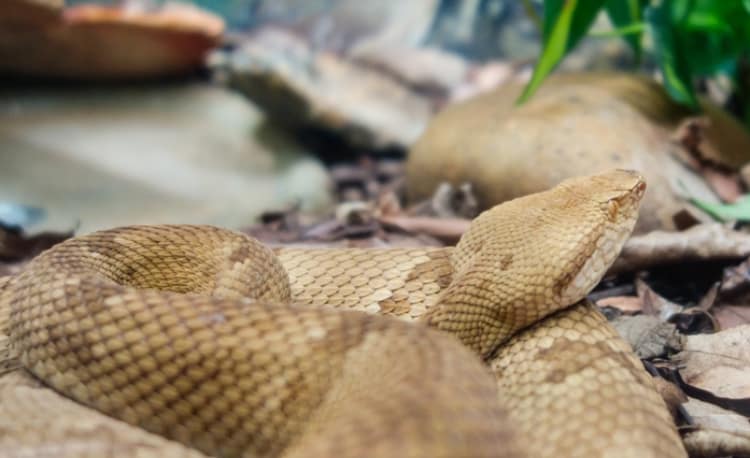
Only the Brazilian Navy and chosen researchers who have been approved by the Chico Mendes Institute for Biodiversity Conservation are permitted access to Queimada Grande, which is off-limits to the general public to protect both human and the snake population.
Now that the Brazilian Navy’s participation is necessary in order to lawfully approach the island, trying to view snakes in captivity on the mainland of Brazil would be a safer bet. You have three ways to achieve this: If one asks respectfully, one may legally view golden lanceheads at the Butantan Institute in Sao Paulo’s Serpentarium. As an alternative, you may visit the Sao Paulo Zoo, where you can discover an enclosure with five adult lanceheads there in the snake house. Your final resort is to visit the Zoologico Municipal Quinzinho de Barros located in Sorocaba City, in the state of Sao Paulo, to see a unique golden lancehead snake that resides blissfully in the reptile house.

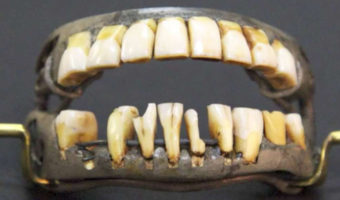

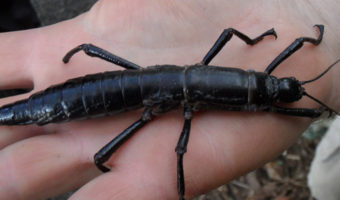
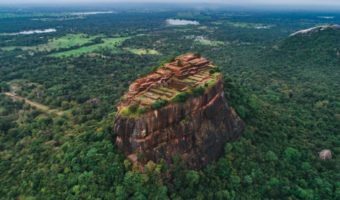


10 Unbelievable Facts that Sound Completely Fake

16 Lesser-known Facts About Eminem’s Life














